Basic geometrical relationships
The relative positions of points, lines and planes
Two points can coincide or be different.A point and a line can be in these positions:
A point and a plane can be in these positions:
Two lines can coincide or be different. If they are different, they can be in these positions:
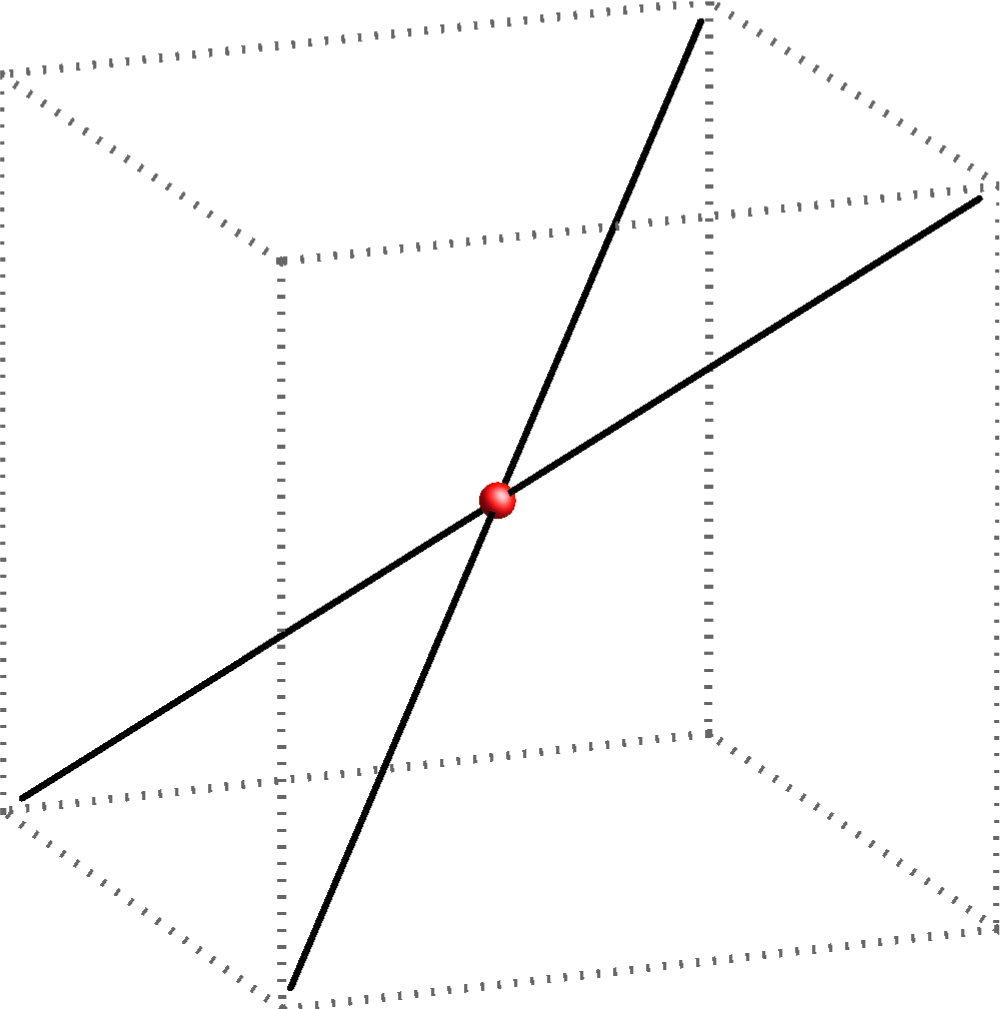
intersecting lines |

parallel lines |
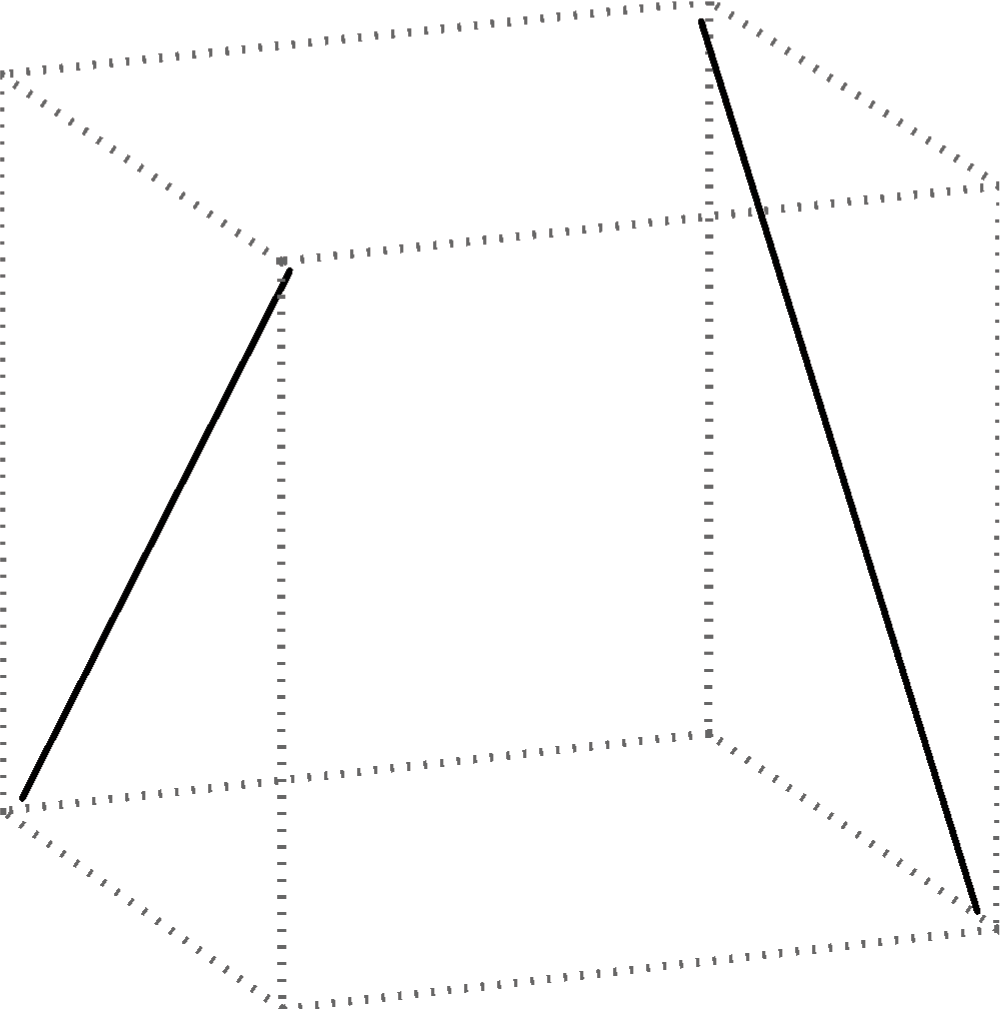
skew lines |
Two planes can coincide or be different . If they are different, they can be in these positions:
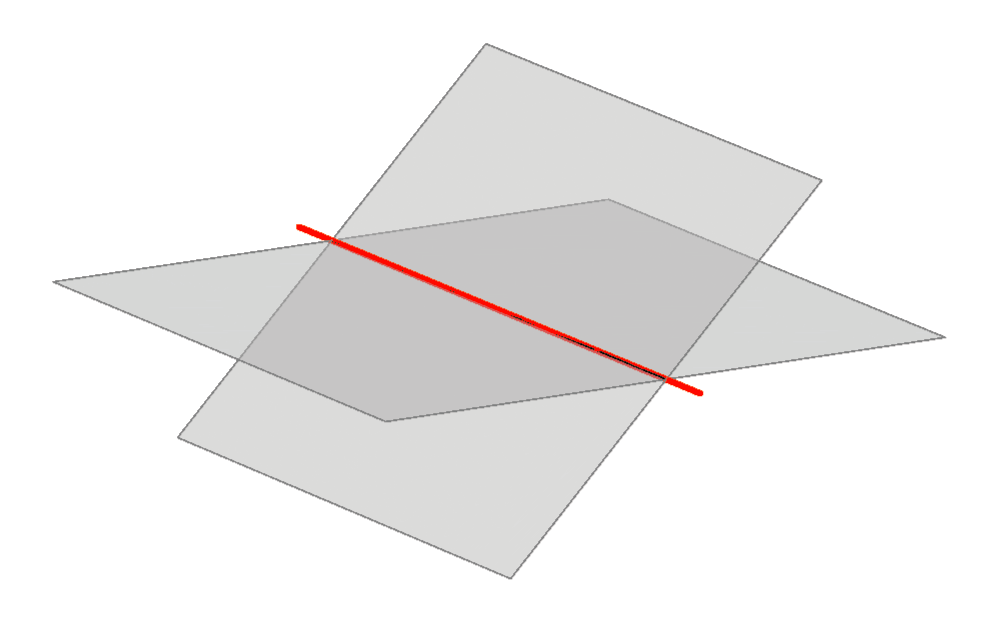
intersecting planes |
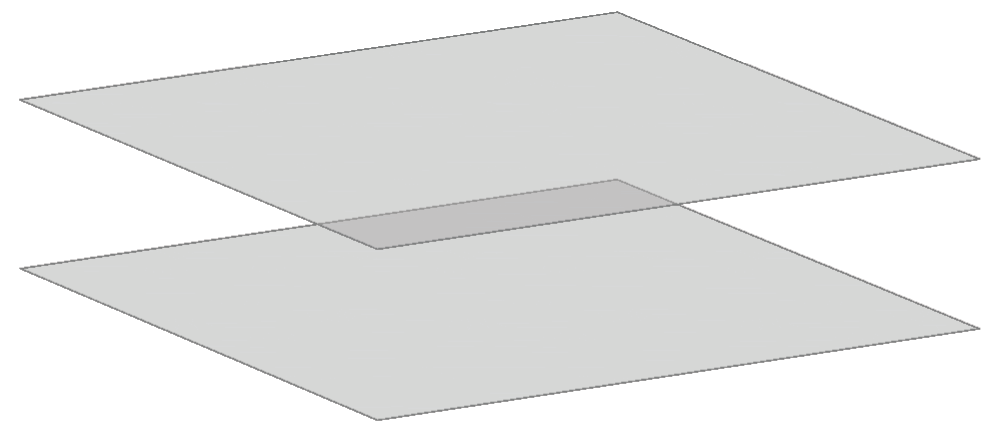
parallel planes |
A line and a plane can be in the following positions:
A line p is parallel to the plane Σ if Σ contains at least one line parallel to the line p. In that case, Σ contains infinitely many lines parallel to the line p. They form a pencil of lines.

line lies in the plane |
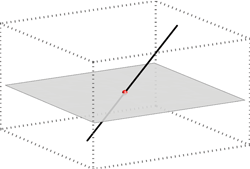
line intersects the plane |
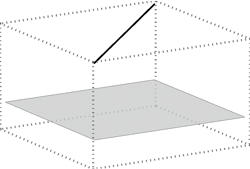
line is parallel to the plane |
Defining a plane
A plane is uniquely defined given:

|

|

|

|
Points and lines contained in the same plane are called coplanar.
Skew lines cannot be contained in the same plane, they cannot be coplanar.
Angle measurement and perpendicularity
Angle between lines and perpendicular linesThe measurement of the angle between two lines is taught in elementary school. The angle between two perpendicular lines equals 90o (the right angle), and the angle between parallel lines equals 0o. All other angles are between that two numbers. We can also measure the angles between non-coplanar lines in the following way:
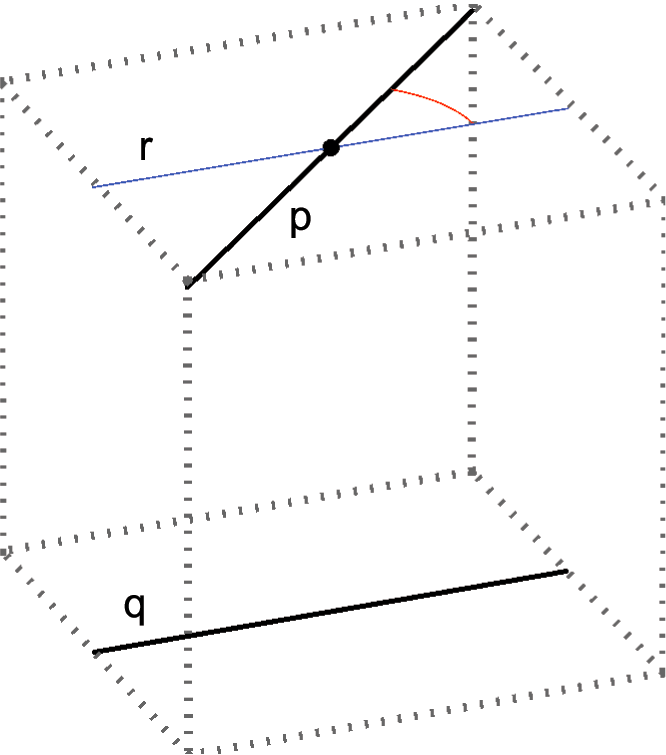
q || r, ∠(p,q) = ∠(p,r) |
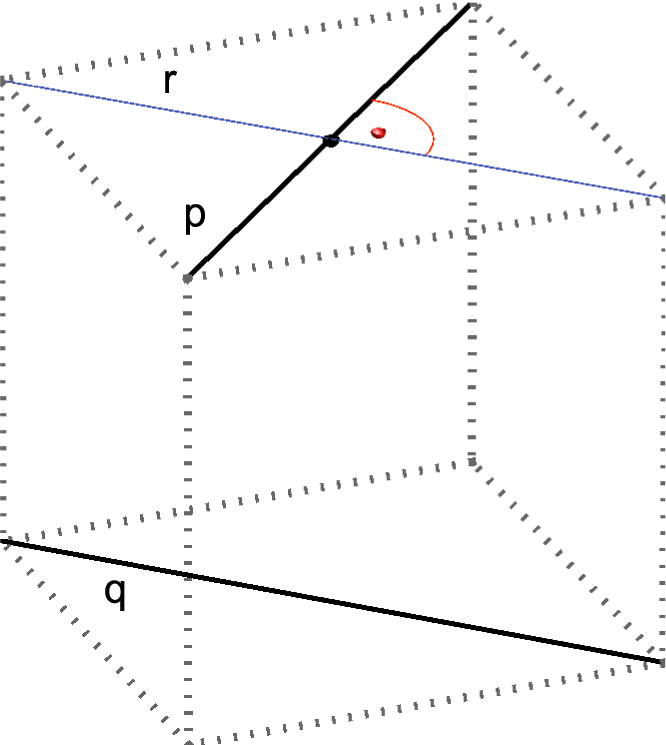
q || r, p ⊥ r => p ⊥ q |
A line perpendicular to a plane
The line p is then called normal line of the plane Σ, the intersection of the line p and the plane Σ is called perpendicular foot of the line p.
It is obviously unnecessary to check perpendicularity to all lines of the plane (and also impossible) so we need necessary conditions for the line to be perpendicular to the plane. These conditions are given in the following theorem:
Here are another two intuitive and important theorems:
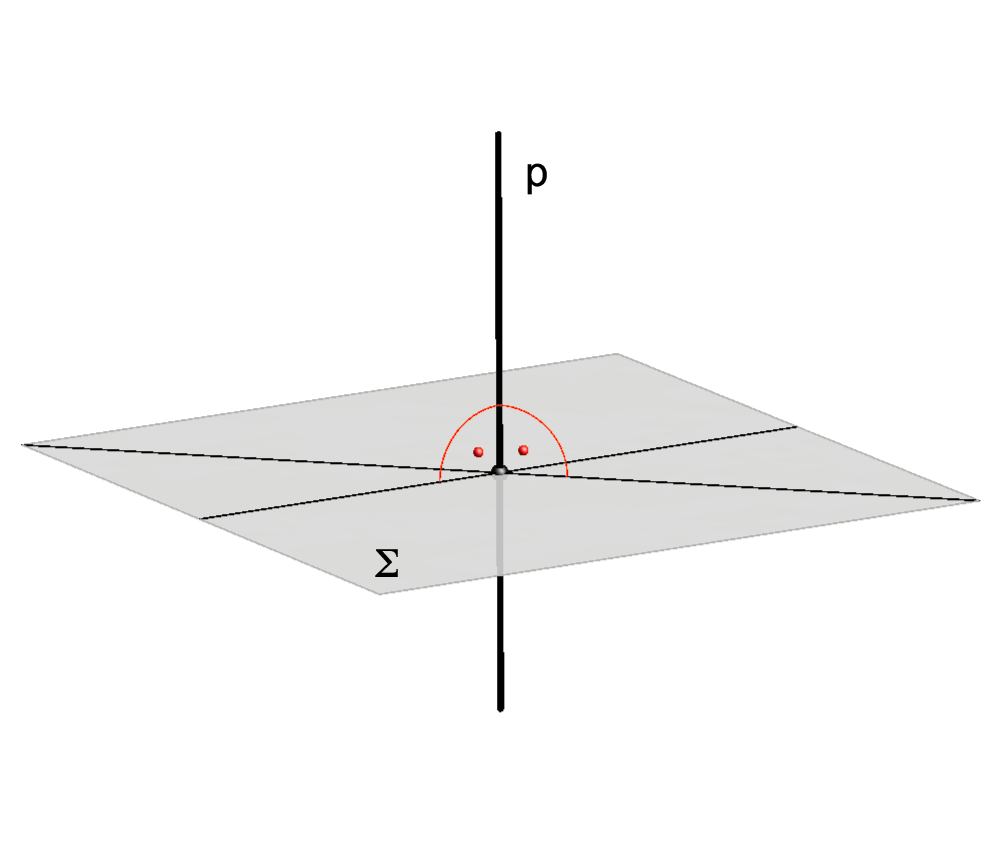
A line is perpendicular to a plane if it is perpendicular to two intersecting lines of the plane. |

A unique plane perpendicular to a given line through any point. |

A unique normal line of a given plane through any point. |
Perpendicular planes
This fact can be written: Σ1 ⊥ Σ2 <=> ∃ p ⊂ Σ1, p ⊥ Σ2
Perpendicularity is a symmetrical relation, if Σ1 ⊥ Σ2, then Σ2 ⊥ Σ1, so in the plane Σ2 exists a line perpendicular to Σ1. Furthermore, if the planes are perpendicular, then each one of them contains infinitely many lines perpendicular to the other plane (pencil of normal lines).
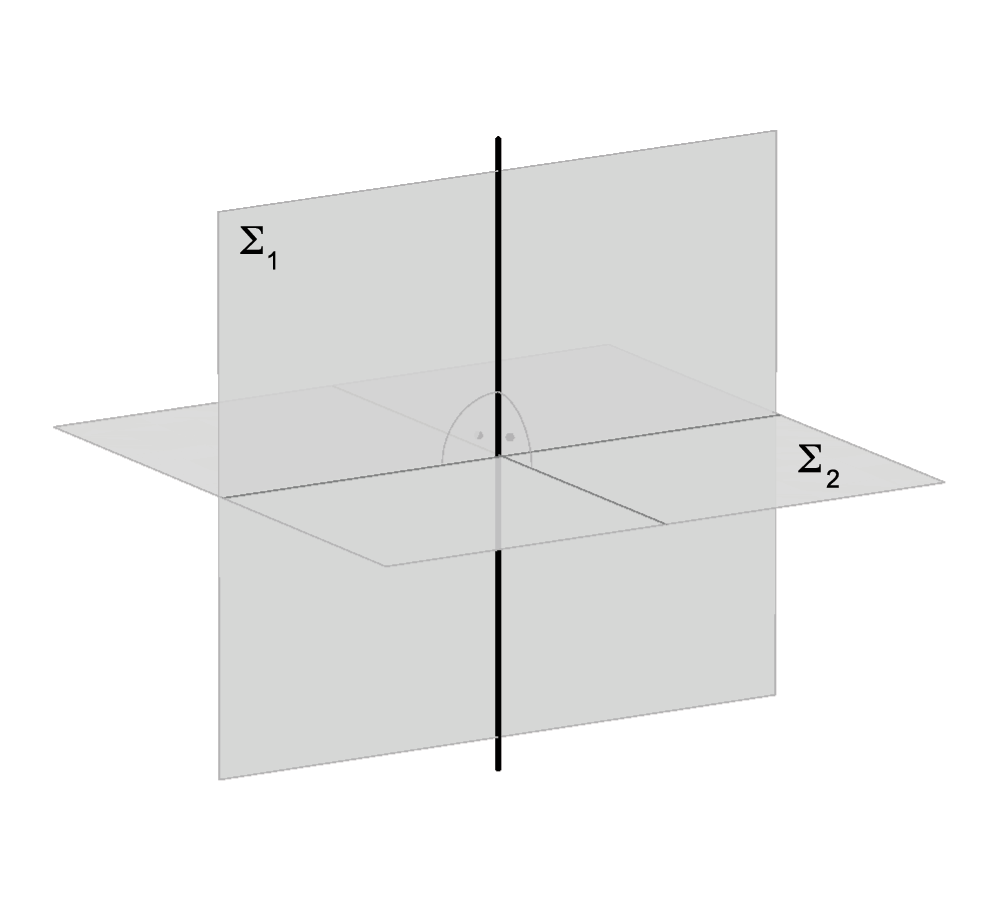
Σ1 ⊥ Σ2 |
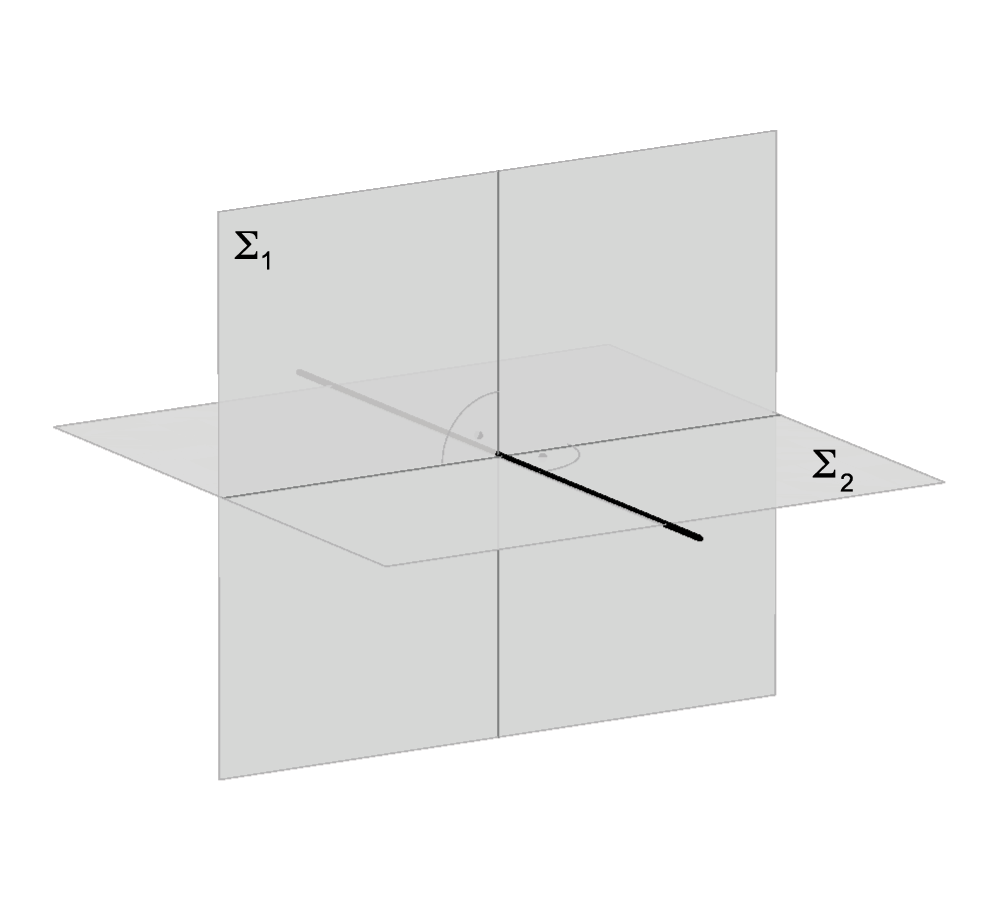
Σ2 ⊥ Σ1 |
Orthogonal projection
If the point T lies on the line p, then Tp=T.
If the point T lies in Σ, then TΣ=T.
If the line p is a normal line of Σ, then its orthogonal projection is their intersecting point (TΣ = p ∩ Σ).
In all other cases, pΣ is a line.
If the line p lies in the plane Σ, then pΣ=p.
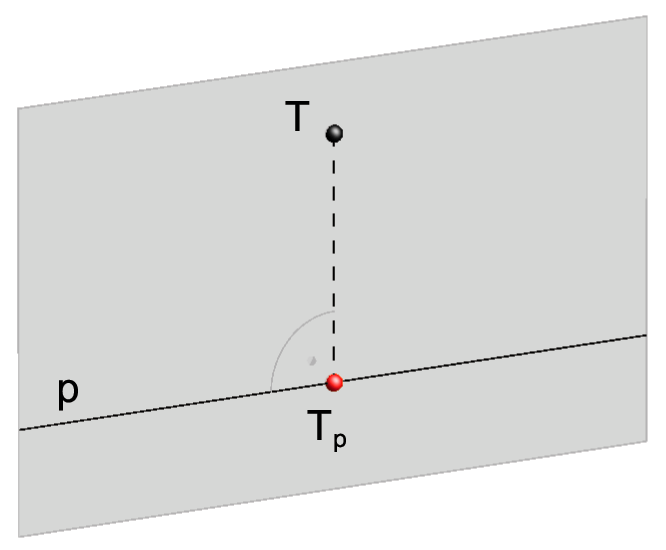
Orthogonal projection of a point onto a line. |
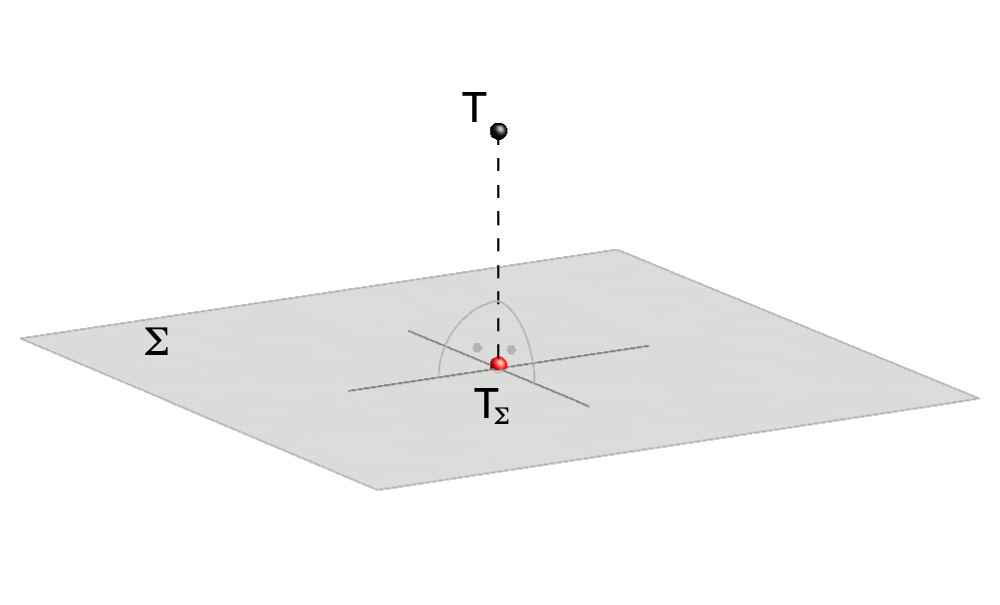
Orthogonal projection of a point onto a plane. |
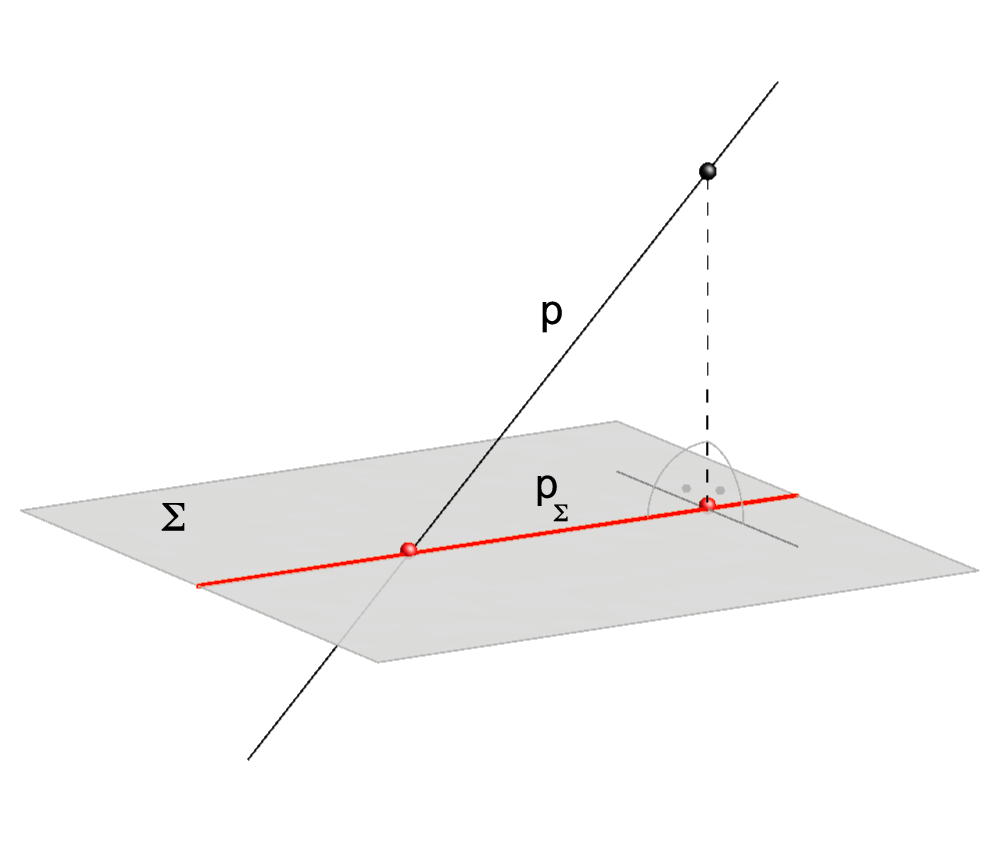
Orthogonal projection of a line onto a plane. |
Angle between a line and a plane
If a line is not perpendicular to a plane:
If the line lies in the plane or is parallel to the plane, their angle equals 0o.
If the line is perpendicular to the plane, their angle equals 90o.
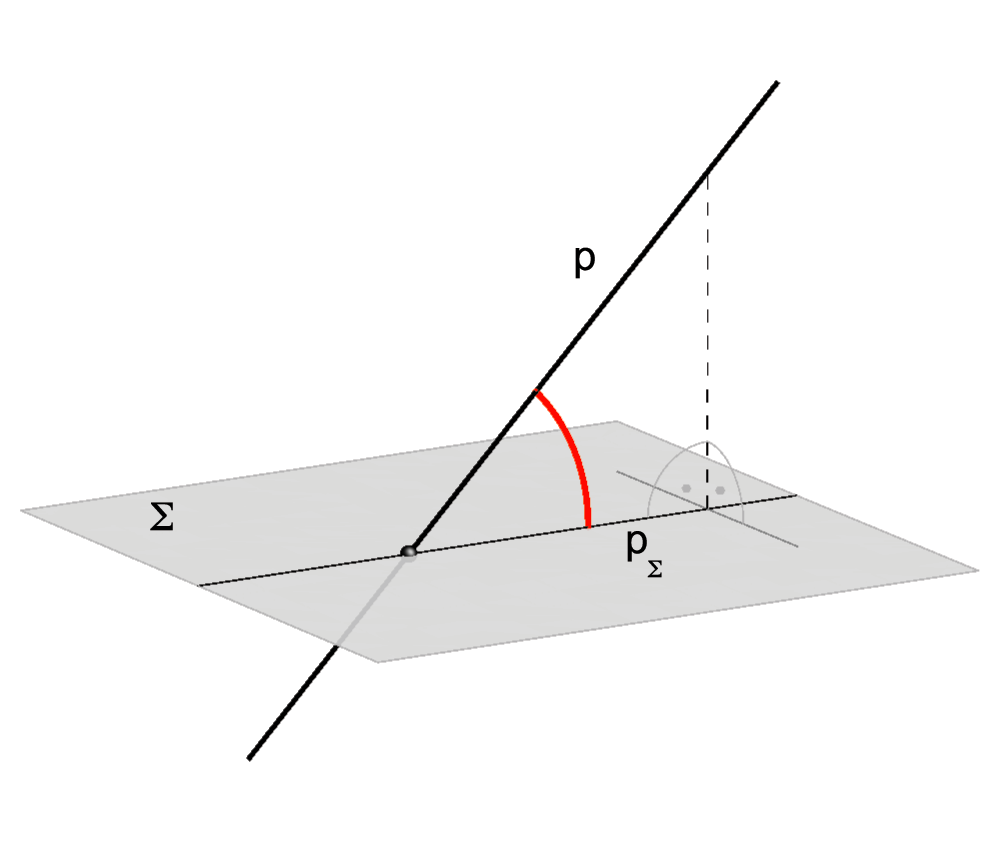
Angle between the line and the plane. |
Angle between two planes
We can define the angle between two planes in the following two ways:
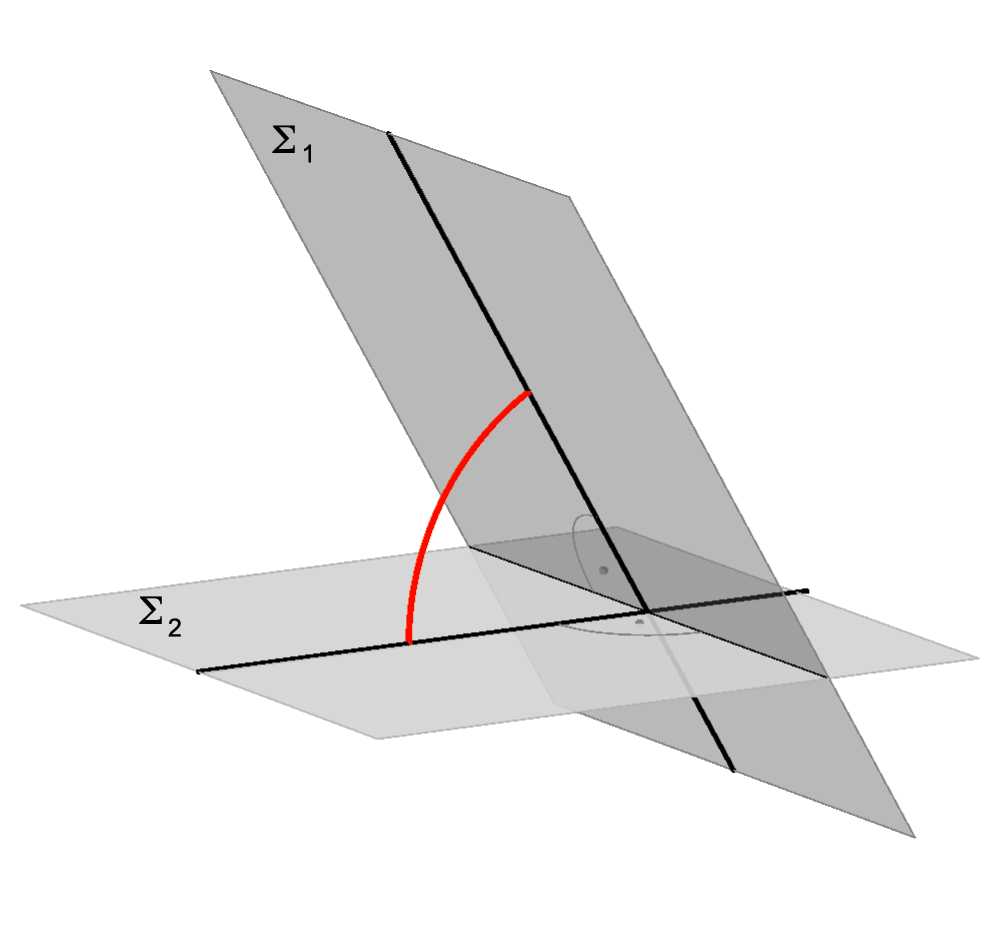
Angle between two planes. |
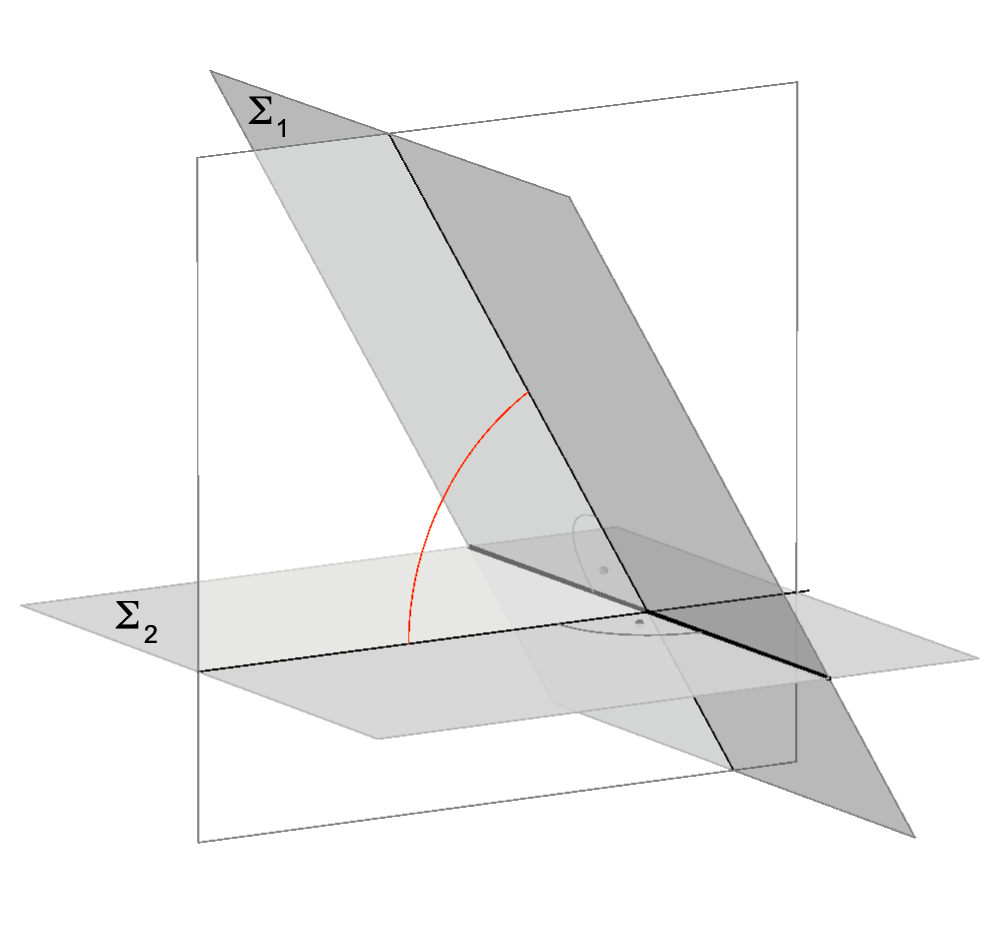
Intersecting lines (used to measure the angle) lie in a plane perpendicular to the intersecting line of the planes. |
Distance
Distance between two pointsThe first measurement everyone learns is the distance between two points.
The distance between points T1 and T2 equals the length of a line between T1 and T2.
Number that denotes this length is d(T1,T2).
If T1 = T2, then d(T1,T2) = 0.
Distance between two sets of points
Distance between two sets of points A and B equals to the smallest distance of points (one from each set).
d(A,B) = min {d(A,B) | A ∈ A, B ∈ B}.
Distance between a point and a line
Distance between a point T and a line p equals the distance between the point T and its orthogonal projection to the line p, d(T,p) = d(T,Tp).
Distance between a point and a plane
Distance between a point T and a plane Σ equals the distance between the point T and its orthogonal projection to the plane Σ, d(T,Σ) = d(T,TΣ).
Distance between two lines
For every pair of skew lines exists a unique line that intersects both lines and is perpendicular to both lines. This line is called normal line of two skew lines.
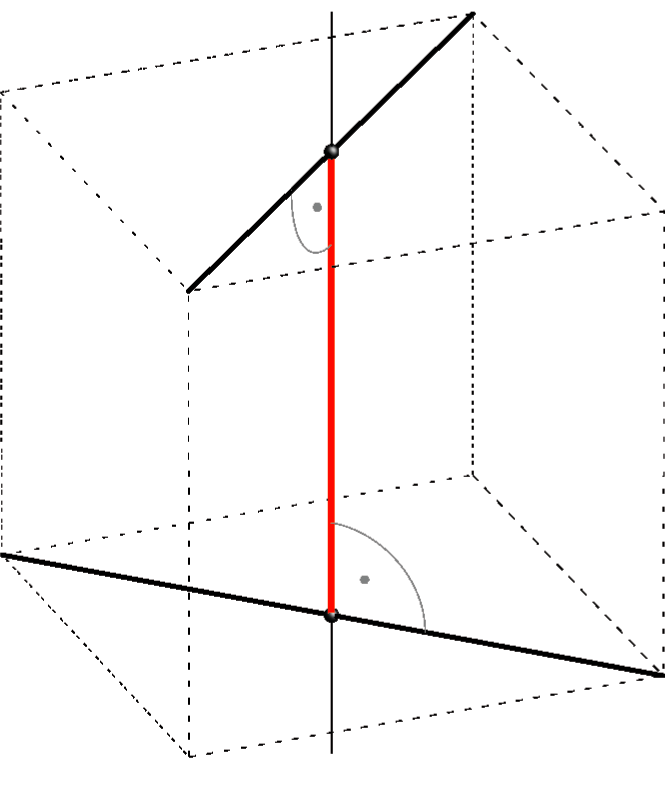
Distance between two skew lines. |
Distance between a line and a plane
Distance between two planes